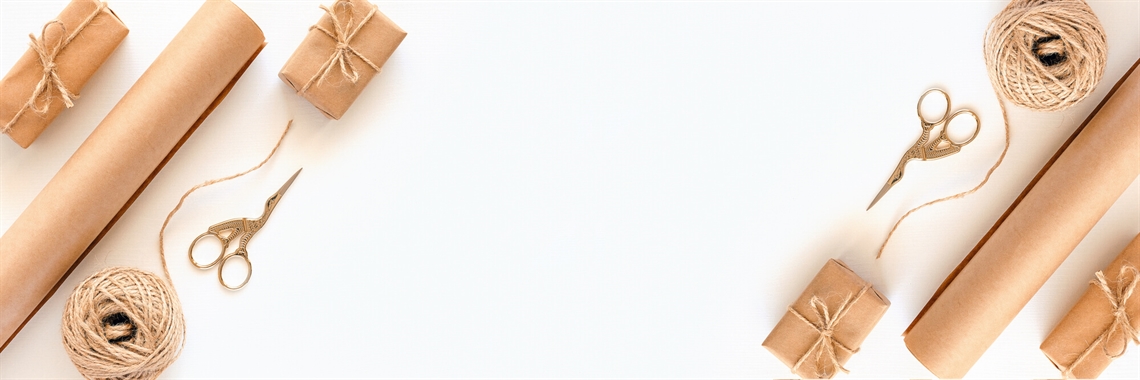The History of Flexible Packaging
04 May 2021
You may think flexible packaging is a recent advent of our modern society, but we can trace its origins 1,500 years! However, the appearance of packaging has changed a lot over the years. Early humans used roughly sewn packaging for transporting and storing food. Those primordial packages eventually spawned what we know today as flexible packaging, and the journey is an interesting one. Of course, we know that we can count on flexible packaging, so join us today. We will transport you back in time to see the history of flexible packaging.
Paper Products
Paper is likely the most ancient form of what today is known as "flexible packaging." The Chinese utilized thin layers of mulberry bark to cover food items from the first or second century B.C. Over the next 1,500 years, the paper-making process progressed and migrated to the Middle East, later to Europe, and eventually to the United Kingdom in 1310. The paper technique finally made it to the New World in Pennsylvania in the late 1600s.
The first paper products were very different from what we use nowadays. The earliest paper products were made from flax seed fibers and old linen rags. It wasn't until the late 1860s that people developed paper from wood pulp.
Commercial paper bags were first produced in Bristol, England, in 1844. Francis Wolle created the bag-making machine in the United States in 1852. Later in the 1870s, they leveled up the process by adding glue and a gusset design. After the beginning of the century, in 1905, machinery was created to produce printed paper bags quickly.
Along with creating the glued paper bag, the more costly cotton flour sacks that were popular at the time could finally be substituted. A more robust multi-walled paper bag for larger quantities could not replace cloth sacks until 1925 when a method for sewing the ends was finally developed.
Glass Products
It's true that glass is considered "rigid packaging," but no history of flexible packaging would be complete without a small introduction to forms of rigid packaging.
Even though glass-making began in 7000 B.C. as an outgrowth of pottery, Egypt first industrialized glass in 1500 B.C. They designed glass from limestone, soda, sand, and silica, which were in abundant supply. Glassmakers melted the ingredients down, mixed them all together, and molded them while hot. Since the beginning, the mixing process and the ingredients for glass have changed very little, but the molding techniques have been revolutionized.
In the early days, cords of molten glass would be twisted into shapes and fused. When 1200 B.C. came around, they started pressing glass into molds to make cups and bowls. Phoenicians invented the soldering iron in 300 B.C., which speeded production and allowed for round containers.
Beautiful glass colors were available, but the clear, transparent glass was not found until the Christian era. Over the next 1000 years, the process spread gradually across the continent of Europe.
Metals
Ancient Europeans developed a tin plating process in 1200 A.D. in Bohemia, and Bavarians used cans of iron coated with tin as soon as the 14th century. Albeit, the metal plating process was a tight-lipped secret until the 1600s.
The Duke of Saxony eventually stole the technique and spread it across Europe to France and the United Kingdom by the early 1900s. After William Underwood delivered the process to the United States in Boston, steel began to replace iron slowly.
Soon, soft, collapsible metal tubes that today would be known as "flexible packaging" were first designed for artist's paints in 1841. Toothpaste was thankfully invented in the late 1800s and was sold in foldable metal tubes. However, food products did not make much use of flexible packaging formats until later, in the 1960s. Eventually, they switched from aluminum to plastic for food items like sandwich pastes, frostings, and puddings.
Plastics
Plastic is the youngest material in comparison with other types of packaging. Plastics were developed in the 19th century, and originally they were reserved primarily for military use.
Cellulose acetate, a bioplastic, was first developed from wood pulp in 1900. It was created with photographic uses in mind. Even though DuPont made cellophane in New York in 1924, it wasn't commercially produced for packaging until the late 1950s and early 1960s. Meanwhile, polyethylene film wraps were solely reserved for the military because of their smooth, non-abrasive surface to protect cables during World War II.
Other cellophane and transparent films have been developed as outer wrappings that hold their shape even when folded. Initially, they were clear. Now such films can be opaque, colored, or stamped with patterns.
The invention of cellophane was important for flexible packaging. Here's a rundown of events it set off:
- 1930: 3M engineer Richard Drew invented cellulose tape that allowed bakers and grocers to package their items
- 1933: Dow Chemical lab engineer accidentally invented Saran Wrap
- 1954: Minigrip resealable bags were invented
- 1968: Food storage bags, Ziplocs were first used
- 2000: Yogurt in a flexible tube was introduced to the public using corn-based bio-packaging
Flexible Packaging Is the Winner
There are many reasons we can count on flexible packaging. It is a clear leader that's just starting to tap into its possibilities. Design flexibility allows producers to play around with design and packaging structure, as well. Consumers can now pull, pinch, tear, shake, reseal, and eat from the same container. Heated containers are cooler to the touch while keeping food warm. Flexible packaging has been at the forefront of packaging innovation since day one, and there are many companies that thrive using flexible packaging. If you'd like to explore the endless options that it has to offer for your industry, contact The Packaging Lab today.
